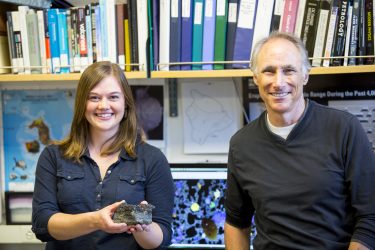
Months of warning signs from Mauna Loa, on Hawaii’s Big Island, prompted the U.S. Geological Survey to recently start releasing weekly updates on activity at the world’s largest active volcano.
For now, such warning signs can only rely on external clues, like earthquakes and gas emissions. But a University of Washington simulation has managed to demonstrate what’s happening deep inside the volcano. The study, published Sept. 7 in Nature Geoscience, is the first to simulate the individual crystals’ movement in the magma chamber to better understand the motion of the magma and buildup of pressure.
Developed by a team that includes UW doctoral student in Earth and Space Sciences Jillian Schleicher and professor of Earth and Space Sciences George Bergantz, the idealized UW computer simulation could help volcanologists better understand how energy builds up inside a system like Mauna Loa to predict when it will erupt.
Read more at UW Today »
